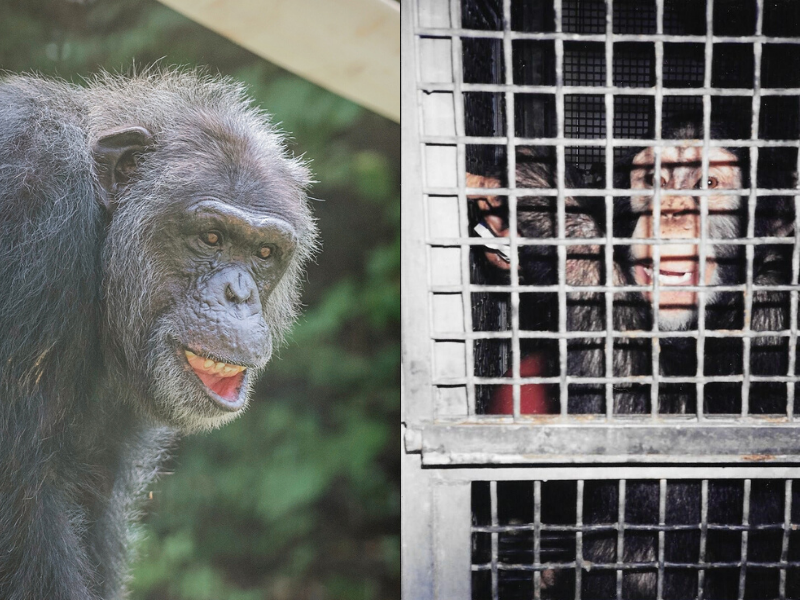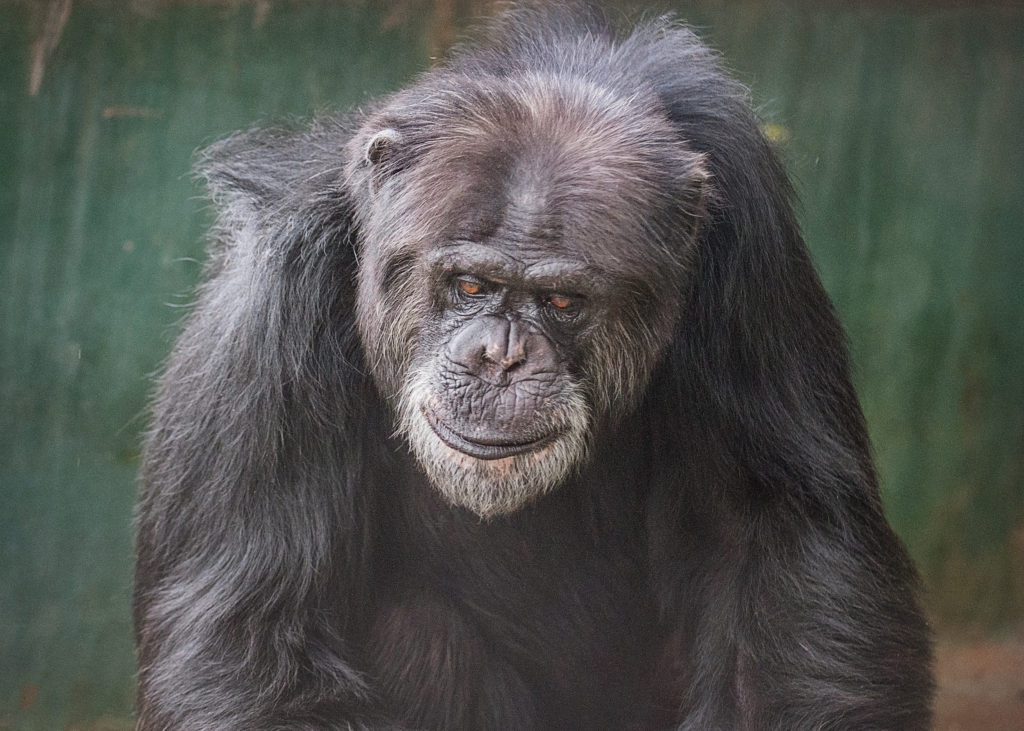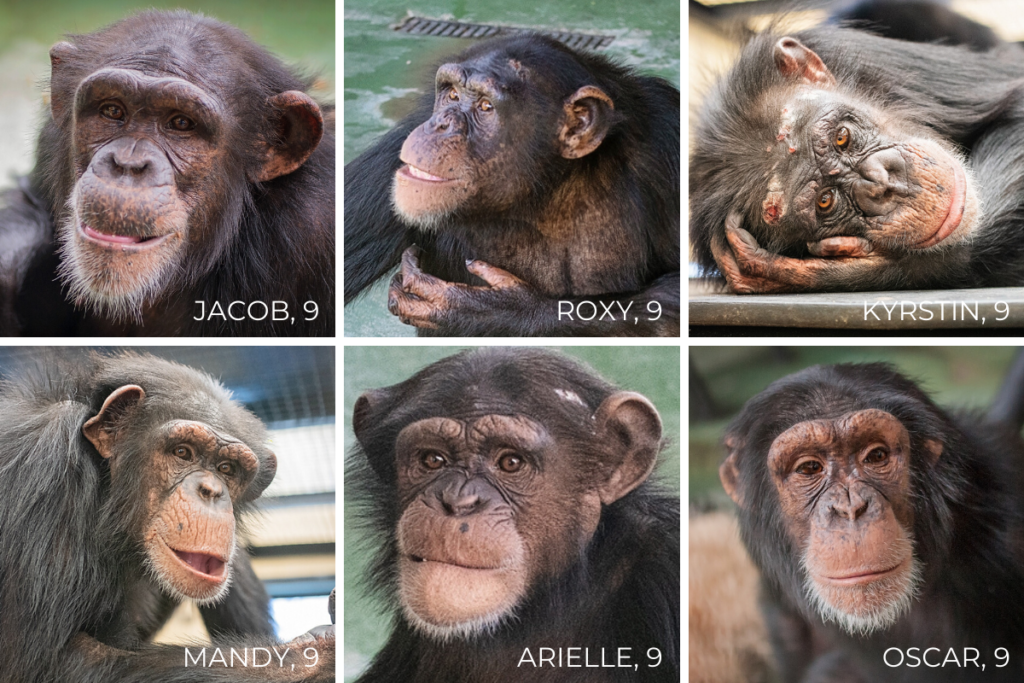
The 2010s: Our Legacy for Research Chimps

Can you believe it’s almost the end of the year? And the decade?!?
As we swing into the second Roaring 20s, let’s take a moment to look back and reflect on the accomplishments made for captive research chimpanzees and the challenges that still lay ahead.
We have come so far in the few short years that chimps were freed from medical research and testing, but with hundreds of chimps still waiting in the lab, we must not forget their past. Nor their future.

In the beginning of this decade, in 2010, the European Union elected to ban testing on great apes, a full five years before the United States would follow suit, making the U.S. the last country in the so-called “developed world” to end testing on chimps.
Milestones for chimps in the 2010s
Here in the states, animal protection groups were mounting opposition to the planned transfer of 200 chimps from the National Institutes of Health (NIH) Almagordo Primate Facility in New Mexico (where they were effectively warehoused after the closure of the notorious Coulston Foundation research lab) to an active research facility in Texas.
The chimps had a troubling past in research.
After 14 of the chimps were sent to Texas, the NIH postponed the transfer of the rest. While more than 100 of the chimps were eventually relocated to Chimp Haven, a sanctuary for chimpanzees used in federally-funded research, 44 are still warehoused in New Mexico.

Breeding more chimps for research
Chimps were still being born at NIRC in 2010; destined for placement and future use in research. They would spend the first five years of their life as potential medical test subjects before U.S. policy would change in 2015.
Six of these beautiful chimp babies have already arrived in sanctuary at Project Chimps and include nine year olds Jacob, Roxy, Kyrstin, Mandy, Arielle, and Oscar.

A landmark decision comes mid-decade
On September 14, 2015, the U.S. government listed all chimps, both wild and captive, as endangered under the Endangered Species Act (ESA).
On the heels of the ESA decision, the NIH made a final announcement in November 2015 that it would no longer fund invasive chimpanzee research and would retire all government-owned chimpanzees to the federal sanctuary.
The Humane Society of the United States led this fight, alongside other animal advocacy organizations. Now chimps from federally-funded research would have a home. But where would the more than 400 chimps in private research facilities go?
Project Chimps was founded In anticipation of the federal policy changes. Our founders negotiated an agreement with NIRC, which housed the largest population of privately-owned chimpanzees in the United States, to provide lifelong sanctuary to all of its chimpanzees.
In 2016, we transferred the first group of chimpanzees from NIRC to Project Chimps, and have continued to receive additional groups of chimpanzees in phases. Thanks to our supporters, Project Chimps is home to 79 chimpanzees with more groups to come!

Our legacy for research chimps
Looking back is hard. It can be unpleasant to think about what humans have done to our closest genetic cousins. While we spend most of our time looking forward and planning for the future, it’s important to occasionally look back.
But let’s look forward now. What will our legacy be for former research chimpanzees in the 2010s?
79 chimps now live in permanent sanctuary at Project Chimps, but nearly 130 are still waiting to come.
YOU can be part of their future and help erase the memories of their past by helping them arrive in sanctuary. Commit a monthly, ongoing, gift today to ensure their future. Or make a significant impact by helping fund our future expansion.
In the Roaring 20s, they’ll still be counting on us.
Photos by Crystal Alba.
